Score breakdown
Things we like
- Stacked with tech
- Surprisingly roomy for such a small car
- Great 1.0-litre turbo engine
- Lovely to drive
Not so much
- A lot of money for a small car
- Service pricing a little stiff
- DSG a little hesitant
The Volkswagen Polo has had a very interesting two and a half decades on sale. You can kind of plot the philosophy of VW Australia’s management, the change in competition and the change in consumer behaviour and tastes. A decade ago you could snag a stripped-out Polo for $14,990. Now you’ll pay almost twice that for a manual 74kW one, but it isn’t nearly as bare.
Times have changed. There’s almost nothing under twenty grand worth buying and there are so few light cars left that people forget they even exist. But the Polo has stayed the course, seeing off competitors from Japan, Korea, Europe and from within its own VW Group stable. Write-offs and retirements aside, there are nearly 90,000 cars bearing a Polo badge in Australia. My extended family has two of them.
VW isn’t alone in sending its light car upmarket – Toyota did it with Yaris, you can’t even buy the ageing (but still appealing) Mazda2 for under the magic twenty grand and pretty much every other rival is stacking up with gear and going for the big dollars. And people are paying. VW has chucked whatever the technology equivalent of the kitchen sink is at the Polo and is asking you to pay several thousand dollars more for it. Let’s find out if it’s worth it.
Pricing and Features

The Polo range now consists of two variants (plus the GTI, reviewed separately), now called Style and Life. This mirrors the rest of the VW range as the company looks to make things simpler for everyone, although it’s not like there were ever ten or fifteen variants available like, say, the Mazda CX-3.
The Polo Life kicks off at $25,250 for the manual (with a 75kW engine) and $28,250 for the 85kW dual-clutch version (both before on-road costs). For that you get 15-inch alloys, LED headlights and taillights, 8.0-inch digital dashboard, 8.0-inch Composition touchscreen, wireless phone charging, cloth interior, electric folding rear vision mirrors, air-conditioning, auto wipers, cruise control, leather wheel and shifter and a 15-inch steel spare wheel.
This all seems like a lot but as I say, prices of small cars have gone to relatively stratospheric levels and were already well on their way pre-pandemic

The $1700 Vision and Tech package is only available on the DSG Life and comes with an 8.0-inch touchscreen with sat-nav (VW calls this screen Discover), upgraded digital dashboard, voice control, wireless Apple CarPlay and Android Auto, adaptive cruise control and travel assist (which works with the active cruise to keep you in your lane).
Moving on to the DSG-only Style at $31,250 before on-road costs, you get 16-inch alloys, upgraded front seats, the 10.25-inch Digital Cockpit Pro, travel assist, auto parking, auto LED Matrix headlights, adaptive high beam, dual-zone climate control, front fog lights and ambient interior lighting.
You can add to the Style with the Discover 8.0-inch screen, wireless Apple CarPlay and Android Auto, six-speaker Beats audio and keyless entry and start for $1900. Volkswagen reckons – credibly, I think – that you can’t buy a similarly-equipped light car with this level of technology under $35,000, and by that they mean things like advanced safety and Matrix LEDs.
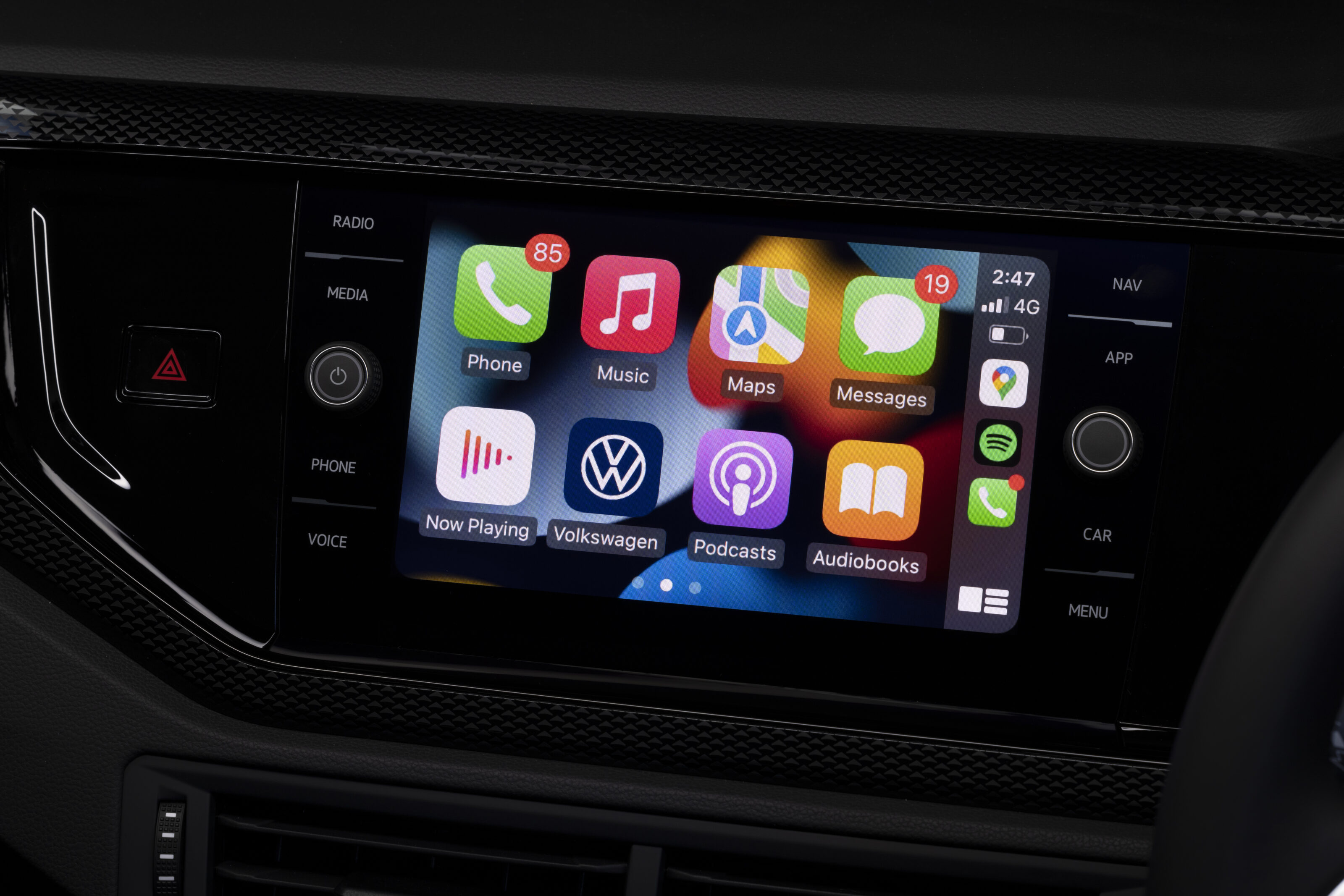
Metallic paint is $600, which is not cheap but not as expensive as some brands.
This all seems like a lot but as I say, prices of small cars have gone to relatively stratospheric levels and were already well on their way pre-pandemic. A Yaris is now roughly the same price with a 1.5-litre three-cylinder (more with a hybrid drivetrain) and doesn’t have as much gear as the equivalent Polo.
To hit the 2022 five-star ANCAP rating requirement (the older car’s rating was achieved in 2018), the Polo now has an additional centre airbag to prevent head clashes (taking the total to seven), the usual stability and traction controls, forward auto emergency braking (AEB), distance warning display, fatigue detection, lane assist, lane departure warning system, manoeuvre braking, front and rear parking sensors and a reversing camera.
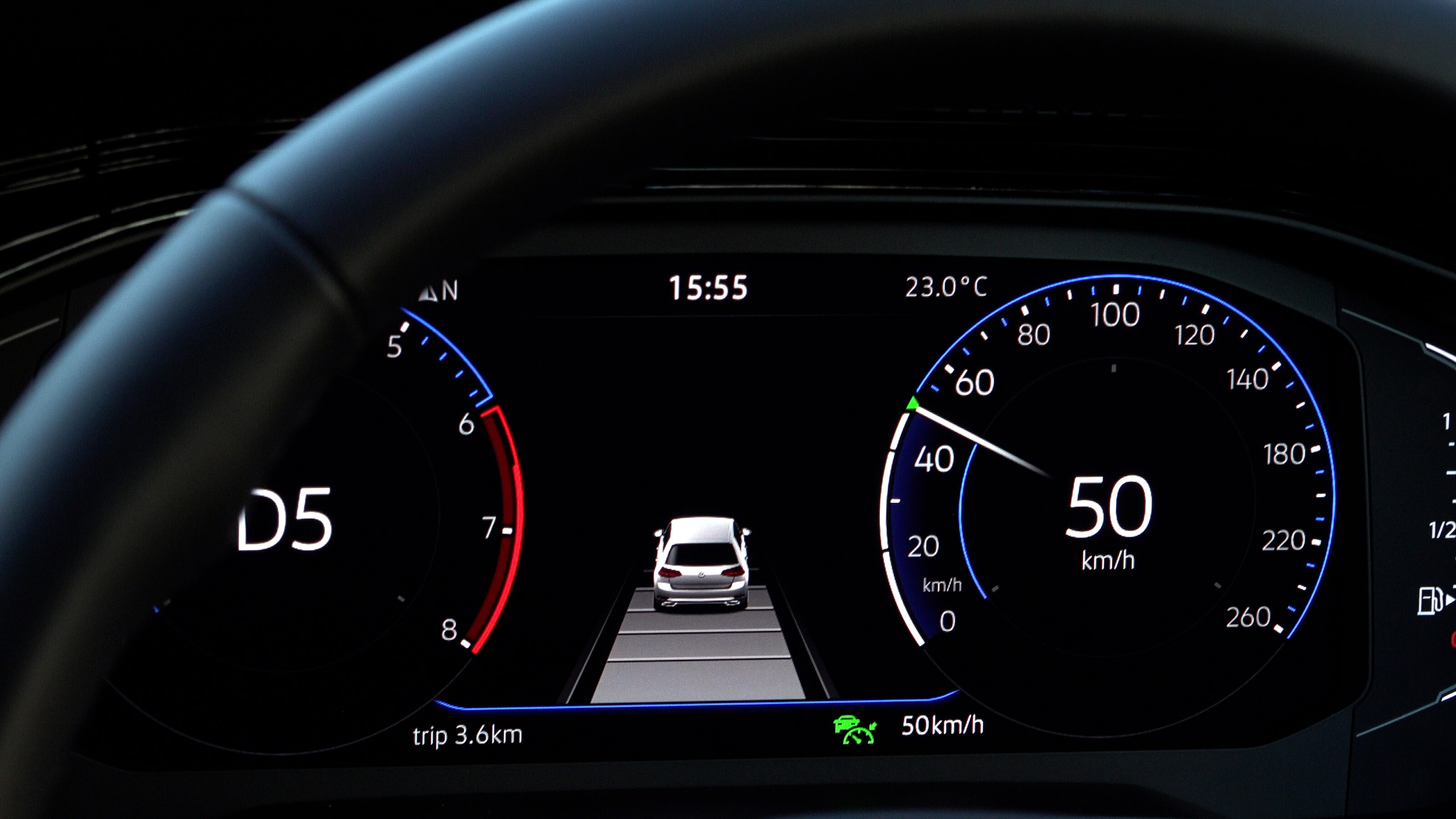
Polos with DSG have travel assist and the Style picks up side assist with reverse cross-traffic alert. While it’s nice to have the latter on the Style, I’d like to see it on every Polo because it’s an insanely useful feature that really makes a difference to pretty much every owner and I say it about any car that doesn’t have it like, say the Yaris and Picanto. The Mazda2 has it standard across the range.
The forward AEB works at up to 80km/h and now includes both pedestrian and cyclist detection.
Comfort and Space
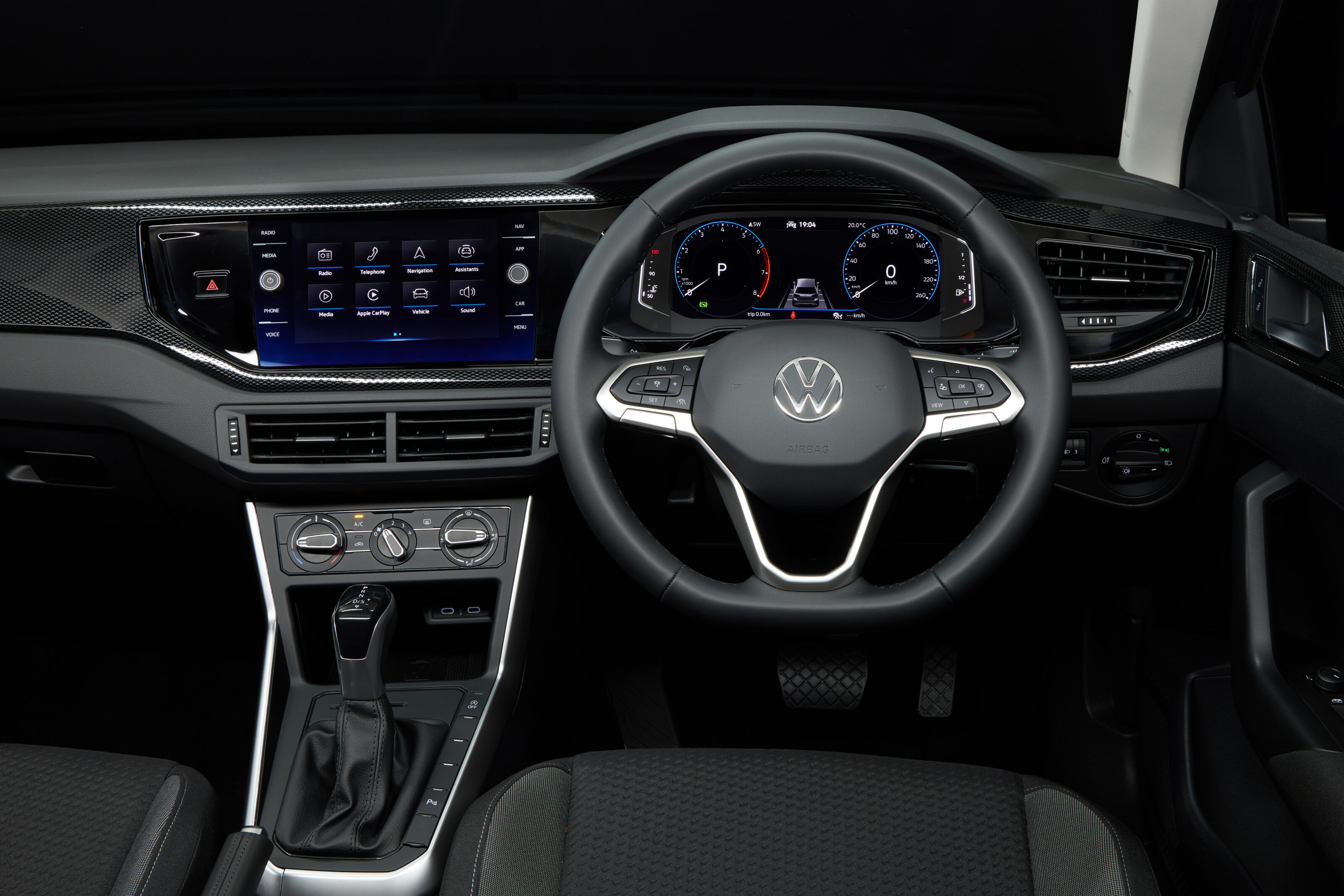
There are some minor differences between the Life and Style, which mostly boil down to slightly different fabric on the seats, slightly sportier front seats in the Style and really, not much else.
The Life and Style both share the improbably large boot which measures a whopping 351 litres, comfortably outgunning everything in its class, most smaller compact SUVs and even some hatchbacks and SUVs a size up. Drop the 60:40 split-fold rear seats and you have 1125 litres to fill. The boot floor is also one of those clever two-position arrangements where you can sacrifice a flush loading lip for more depth.

The rear seats are definitely snug but if you’re up to 180cm (like me) and don’t have absurdly long legs, you can actually fit behind front-seat passengers of similar height. I’m not going to pretend it’s limo-like, but my knees clear the seat behind my driving position and there’s plenty of headroom with or without a sunroof. Sadly, the lack of rear air vents, armrest and cup holders mean it’s a bit grim back there. Unless you’ve got devices with USB-C cables, in which case you’ll find a generous pairing of them in the rear of the console.
The front seats in the Life are quite firm but come into their own once you’ve settled into a longer trip and they look pretty good too, even if the cloth interior is fairly dull. Stepping up to the Style, you get a little more bolstering and a sportier design on the seat fabric.
Some of the plastics look cheap … it feels a lot more classy than the Yaris and is vastly better on the technology front
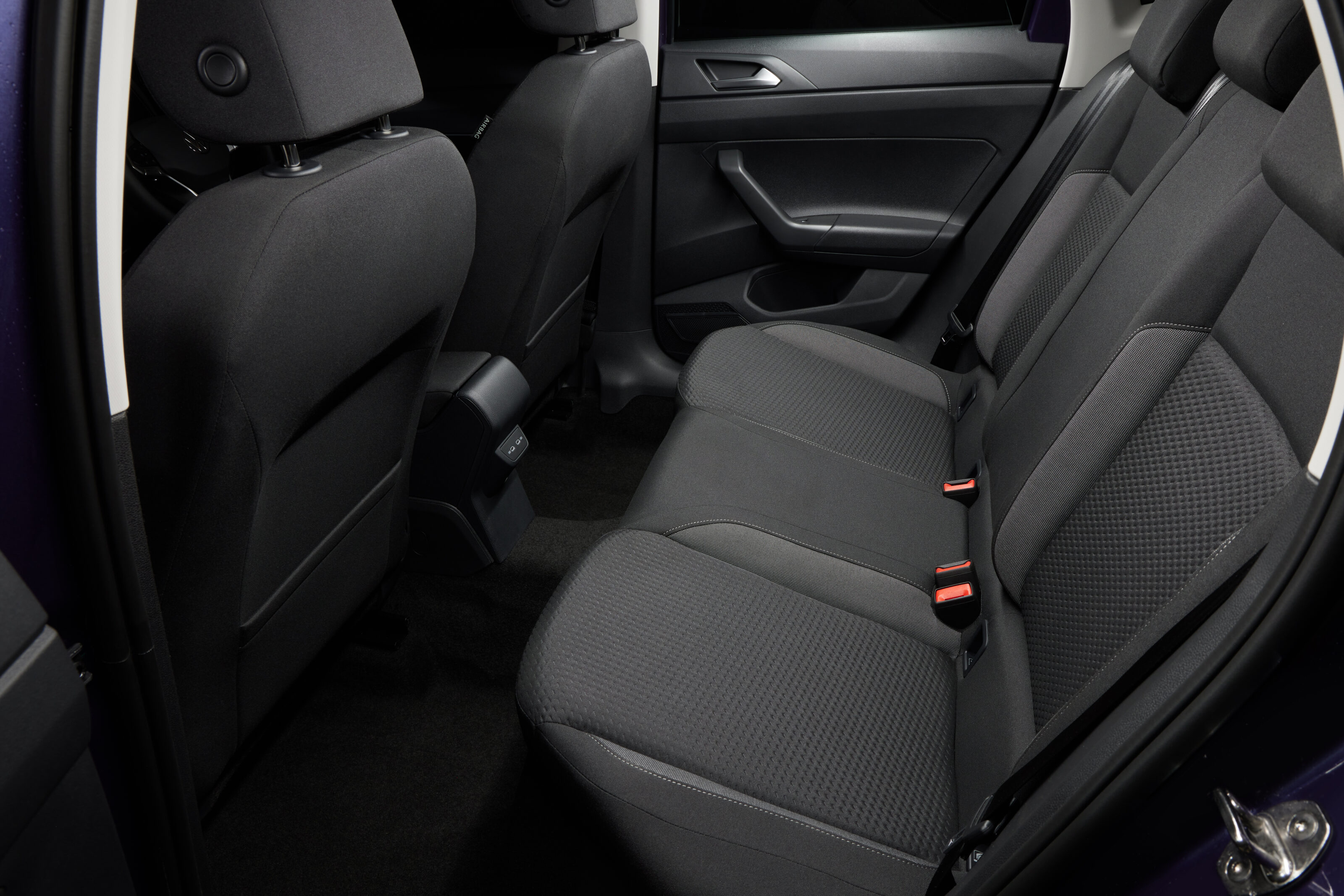
A pair of hexagonal cup holders sit low in the centre console next to the chunky handbrake (I love me a proper handbrake) and the wireless charging mat is in a cubby under the climate controls, with notches to hold your phone in place. The doors have big pockets, too, and will take a decent-sized bottle. There’s also a tray under the passenger seat and some storage in the overhead console.
Some of the plastics look a bit cheap, like the console, but the leather wheel and shifter feel nice and it’s quite airy given its size. It feels a lot more classy than the Yaris, which is full of weird design choices and the Polo is vastly better on the technology front than the Toyota’s risible media system.
On the Road
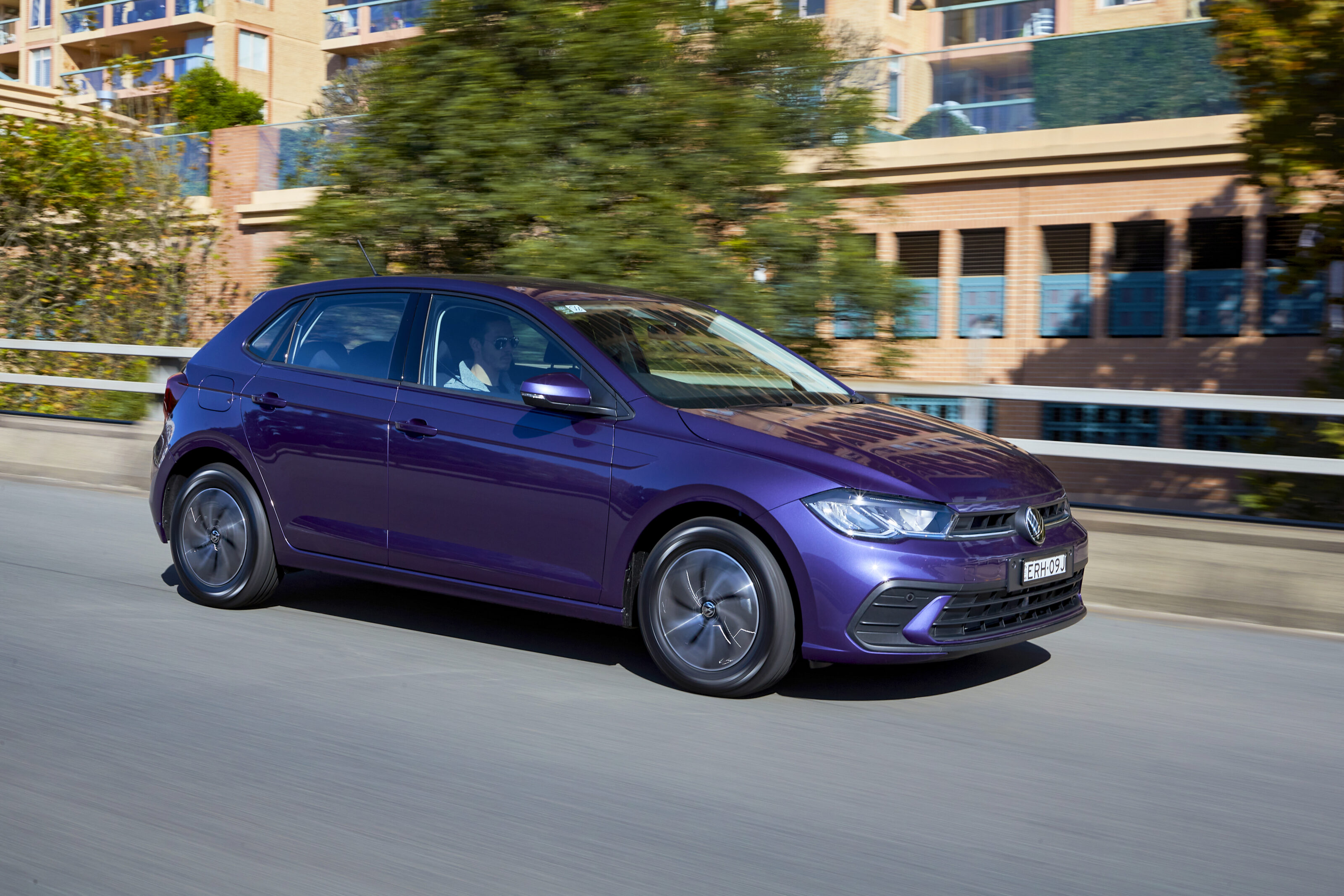
The Polo comes with VW’s 1.0-litre three-cylinder turbocharged engine, codenamed EA211. In the manual it delivers 75kW and 175Nm while the DSG gets more, 85kW and 200Nm, the torque figure out-punching pretty much anything in the segment apart from the identically-engined Audi A1, at least on paper. Power goes to the front wheels.
The whole time I drove this car, my internal monologue kept saying, “This is such a nice car to drive.” When my wife and I embarked on a foolhardy Saturday morning expedition for bread and coffee beans, her external monologue agreed wholeheartedly. “It just feels right,” she said. “I’d have one of these.” This has never been said by her about a light hatchback in the last ten years.
The whole time I drove this car, my internal monologue kept saying, “This is such a nice car to drive.”
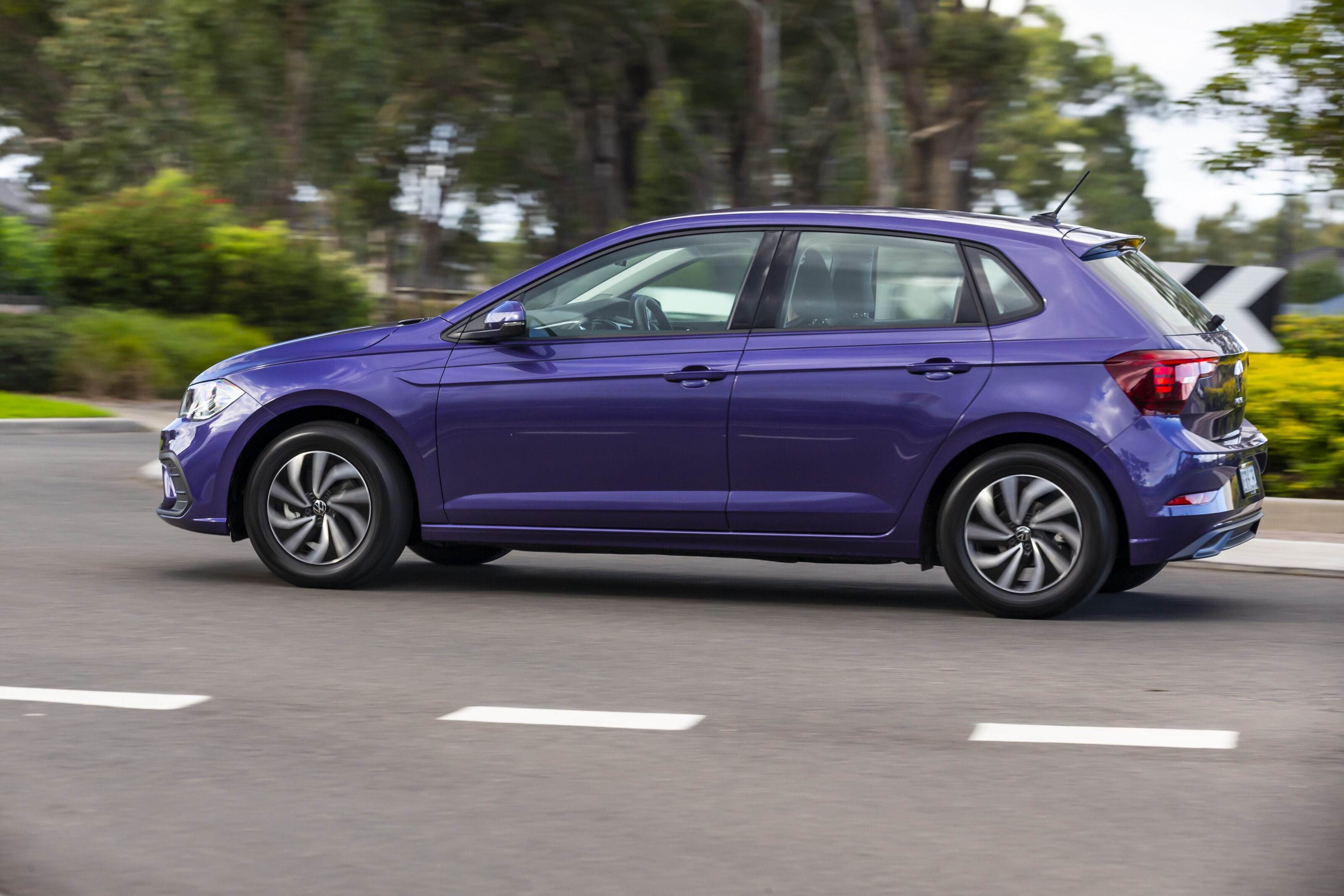
Not only did I drive it across plenty of broken and twisty tarmac, in heavy rain and brilliant sunshine, but I also spent a good deal of time on motorways of hugely varying quality. It feels like a much bigger car in these conditions, with a nicely balanced chassis that rides the bumps well but also has the tyres to deal with enthusiastic driving and anti-enthusiastic weather.
While a 1.0-litre triple doesn’t sound like much, the Polo’s reasonably low kerb weight doesn’t overwhelm the torque figure, which makes for relaxed highway running and overtaking. You don’t have to do advanced wargaming like you do in pretty much everything in its class (hot hatch versions excepted, of course) and when you’re not hauling past semi-trailers and caravans, it’s very, very quiet.
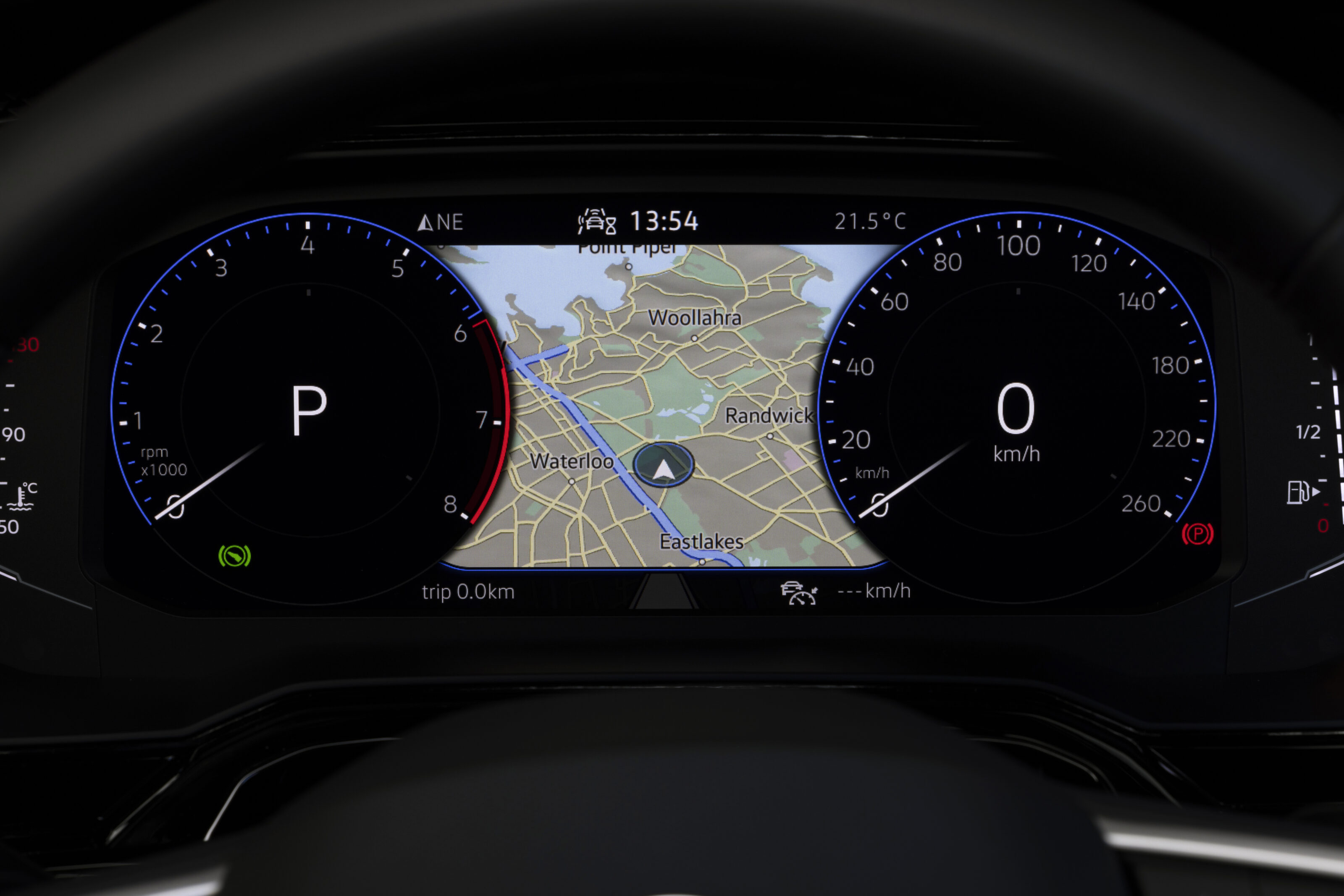
That serenity carries over into city running, with just the occasional bit of racket from the front suspension over bigger bumps. The engine is a distant three-cylinder grumble even when being revved out to its 6000rpm redline. The transmission can be a little hesitant, so you’ll find yourself flexing your ankle a little earlier than you might otherwise or pulling the shifter back to grab Sport mode. Thankfully once it works itself out, the 200Nm of torque carries you along.
The steering is city light most of the time and firms up on the highway, but feels pretty good. In the Style, you get shift paddles, which I rarely used unless I was up for some fun. When I was up for some fun, the brakes felt good in the Life and better in the Style with its bigger wheels and tyres plus rear disc brakes.
VW’s claimed combined cycle figure of 5.6L/100km looks to be achievable. My time with the car, which included the launch program and a further week behind the wheel delivered a 7.1L/100km figure, which ended up being mostly suburban running and short trips.
Ownership
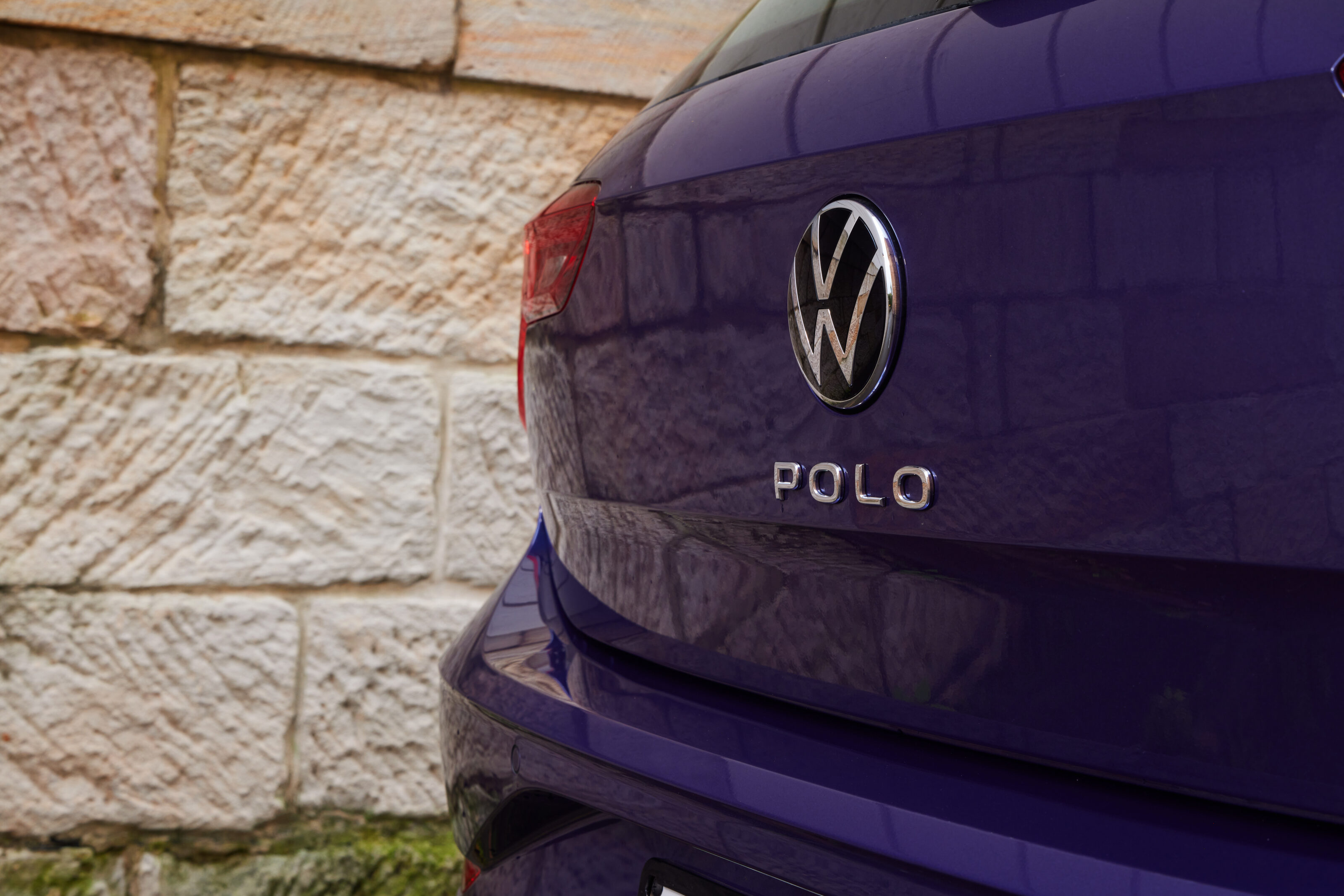
Volkswagen offers a five-year, unlimited-kilometre warranty that very nicely matches up with just about everybody except Mitsubishi (who have thankfully departed the light car market with the miserable Mirage) and Kia (who haven’t with the rather good-for-the-money Picanto).
VW also offers a capped-price servicing regime. You can pre-pay three services for $1300 for the manual and $1400 for the DSG ($433 and $466 per service respectively) or five services for $2150/$2200 ($430/$440). Not gonna sugarcoat this, it’s a lot. It’s worth doing though because you save $160 on a three-year plan and a whopping $664 on the five-year plan over pay-as-you-go.
A Yaris is $199 per service, which is by far the cheapest servicing of any of Polo’s competitors. The Picanto costs roughly the same as the Polo for its manual GT version and only a bit less for the very slow naturally-aspirated versions. A Mazda2 is about $500 less over five years than the Polo but does have shorter service intervals.
VERDICT
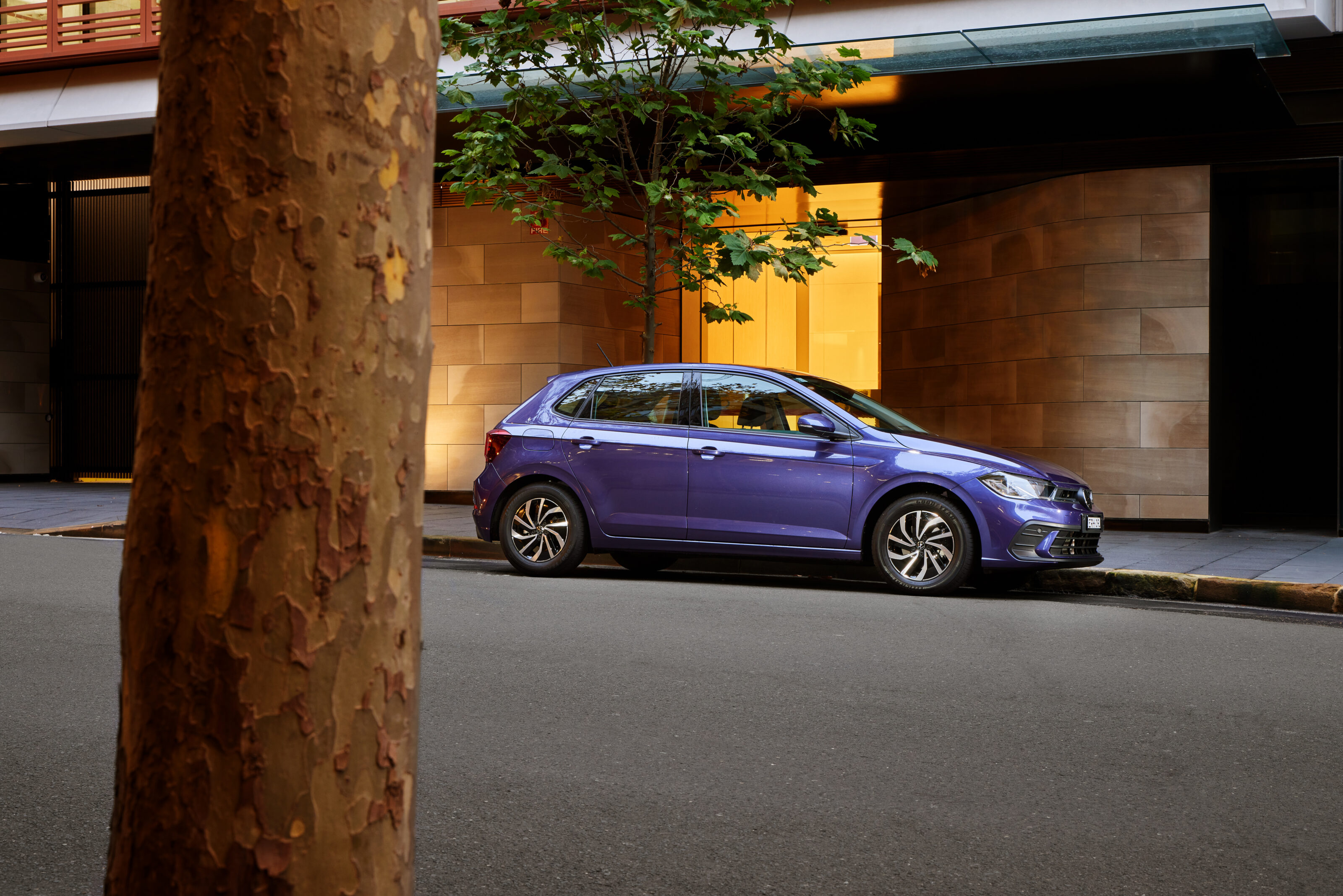
With the kitchen sink approach assessed, it’s very difficult to fault the Polo in light of the segment’s general inexorable rise upmarket. The price is what it is and while it is more than the Kia Picanto, it’s a lot more car than the Picanto. It may not have the Yaris’ hybrid option, but it has a much better interior and is more fun to drive. On top of that, there is a serious safety list none of the competition, bar the closely related Audi A1, can match.
VW told me that there is no base model and I snorted but then realised that there are very, very few basic cars left because nobody buys them. Volkswagen’s own Up – surely one of the best small cars ever made – didn’t make satisfactory enough headway here because you couldn’t get one with the lot.
The car market is giving us what we want. So while you can’t buy a bargain-basement Polo, what you do get is a well-specced, tech-stacked hatch with excellent driving dynamics. That seems like a reasonable trade-off to me even if it means having to dig a lot deeper than before.
Related video
2022 Volkswagen Polo Specifications
Score breakdown
Things we like
- Stacked with tech
- Surprisingly roomy for such a small car
- Great 1.0-litre turbo engine
- Lovely to drive
Not so much
- A lot of money for a small car
- Service pricing a little stiff
- DSG a little hesitant






